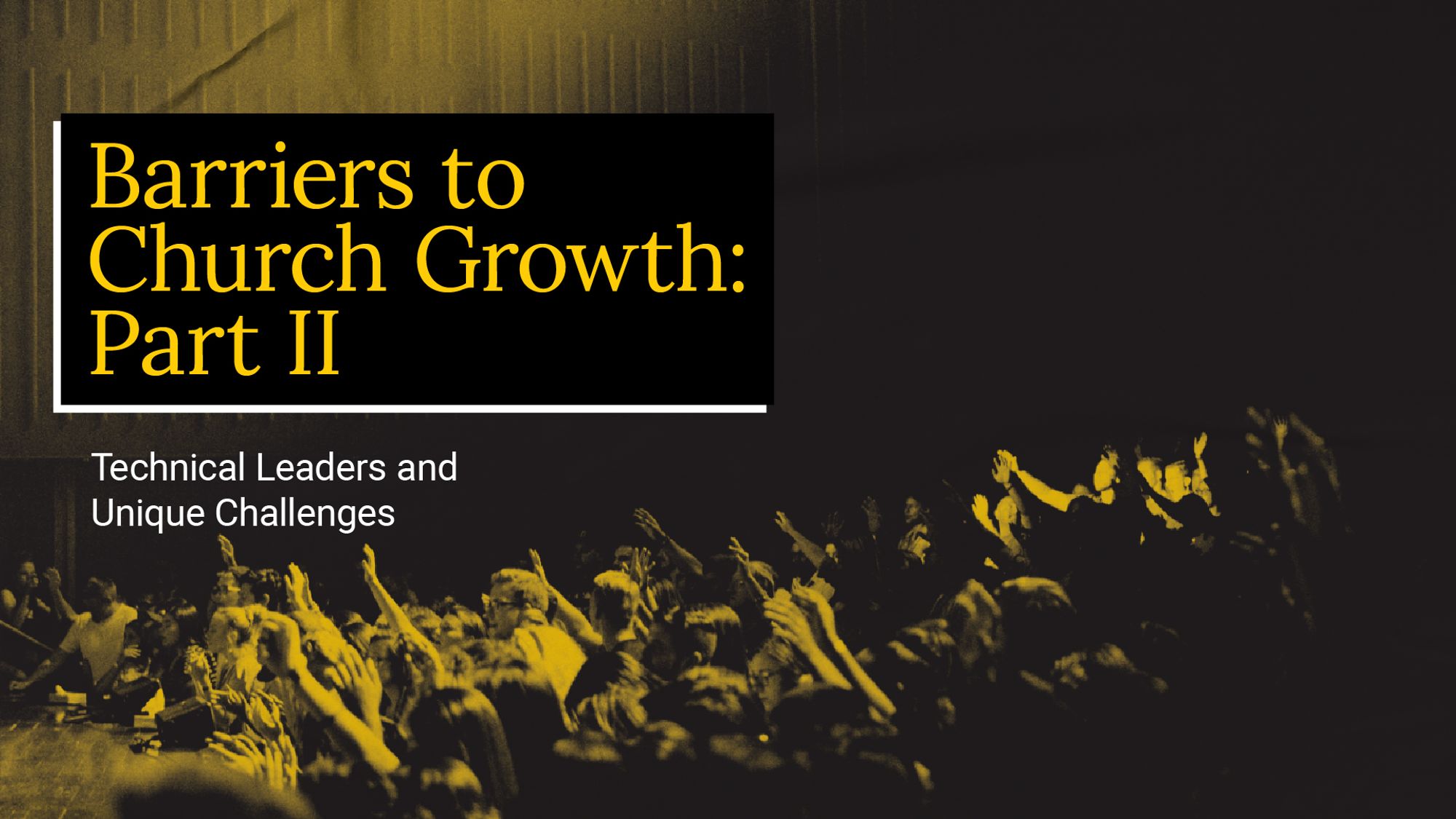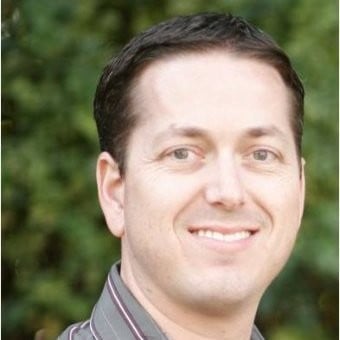
Welcome to part two of a three-part series on barriers and solutions to finding and navigating an inflection point in your ministry.
In this second part, we’ll explore the second and third barriers: technical leaders and unique church challenges. These are nuanced yet significant issues that are holding many churches and their leadership teams back from much-needed change.
Let’s dive in…
Barrier 2: The last 30 years have bred technical leaders
This one’s going to sting a little. If churches are going to pivot, they are going to require a different type of leadership. Pivots require church leaders to make real investments. They must create real change and genuine alignment within their organizations.
Most people attempting to either pivot or repackage their old model for a new audience are “technical leaders”. Not technical in the sense of technological familiarity but rather in the sense that Ronald Heifetz and Marty Linsky introduced it in their book Leadership on the Line.
Technical leaders are the ones who are very skilled at finding and efficiently applying known solutions to build and scale organizations. They may typically follow an innovation or inflection cycle and then operate in a more mature industry to incrementally improve and grow. They are incredibly valuable leaders, and the church needs them.
I would argue, though, that we haven’t been in a moment like the one we’re in now since the late 90s and early 2000s when the church innovated from the organic community paradigm into the excellence paradigm. That time birthed the last 20-30 years of church experience, and our technical leaders have been building from that since.
They’ve been collectively learning from each other how to get the production just right, build vibrant small groups systems, use effective techniques for multisite, establish what the discipleship markers are, etc. And the result has been some incredible churches with huge kingdom impact.
In fact, the result has positioned us for the season we’re now in, one in need of new innovation and inflection. The moment where “our vision doesn’t change, but our methods must” becomes real. But that calls for a different type of leadership, the adaptive leader.
Again, not as we want to define it, or want to see it in ourselves, but as our friends Ronald and Marty would define it. Adaptive leaders know how to experiment and innovate to find truly new solutions. They can see further, with less, and they lead differently. The needs of moments like this are very different in terms of the nature of the work, the needs of the team, and how to thrive.
Like Ford in 2012, Covid thrust the church into the “Dual Imperative”. In 2013, Ford continued to build, incrementally improve, and sell vehicles with gas engines. That paid the bills. They were also desperately working to invest in, learn about, and play catch up in the electrical vehicle segment. All automakers were. They were both doing the thing that was needed today while innovating towards the thing that would keep them relevant in ten years.
The church is also facing a dual imperative, and faux support from technical leaders won’t win the day. The CEO of GM went so far as to give an end date to gas motors, and the CEO of Honda said, “I’ve been in the engine development business for more than 30 years, so personally, it’s a little threatening. But I have to separate my own feelings from what is best for the business.” That’s commitment and self-awareness.
So now we’re back to the sting. Our identity gets poked when we’re forced to ask ourselves if the type of leadership we know and are good at is the type that’s needed. Everyone wants to be an innovator... But if I’m not that leader, can I be that leader? Do we have that leader?
In short, there is a different type of leadership needed, and the barrier is the impact of that realization on our identity.
Barrier 3: The nature of the church presents unique challenges
The church is built around relationships: our relationship with Christ and our relationship with others. If you drive a Ford you may not even know the name of the CEO of Ford, and they definitely aren’t your pastor. If Sears doesn’t offer a hybrid shopping experience, you may switch to Target without any regard for hurting the feelings of the Sears store manager. (Sears is now dead, by the way.)
Here’s the reality: the relational nature of church can obscure more market-driven forces that intend to shape the future. But the shifts those forces are pushing are no less needed. The relational ties and loyalties can make them harder to see and, at a minimum, make change seem less urgent.
The long horizons created by relational connection reduce urgency and bias for action — sometimes for so long we miss the change altogether. At Sandals Church we’ve revitalized and merged with the remnant of those churches several times.
The reality of relationships also creates an outsized impact on the personal resilience of the leaders absorbing and navigating change. When the CEO of Ford responds to Elon’s “inciting incident” in 2012, he may alienate some of his customers who don’t believe a shift towards electric is best. Those customers likely aren’t his friends or his community, and certainly aren’t his parishioners.
The emotional toll of the relational connection our Pastors have had with congregations they couldn’t seem to care for, no matter how they responded to the Pandemic, can’t be understated.
It was public, it was personal, it was an impossible situation, and it was a burden they often carried alone. Unity is uniquely important for a church, and the fragmentation, transitions, and relational losses are more painful. This is unique to the church.
Along with the relational ties inside the church are the cultural ties outside the church. The church, by nature, needs a closer connection to culture and the present experience of people in the community. At the very time the difficulties of model innovation and leadership inside relational complexity and low resilience present, the need for fresh cultural exegesis joins the mix.
Times of church innovation must be tied in with fresh cultural understanding. This is how community churches became mega-churches, then multisite churches. The same will be true for the next iteration of network-driven hybrid churches. So we smear on another layer… How do we understand and adapt to the rapidly changing culture around us? Again, this is unique to the church.
And then there’s the relentless nature of the weekend service. Sunday is always coming. The moment we take a breath to face the future, it’s Sunday again, and we’re back to managing today rather than leading towards tomorrow.
Finally, the last uniqueness the church faces is in the options to respond to these issues… When faced with relational complexities, cultural changes, and the upcoming weekend service we can simply shift away from growth and reaching the lost. We’ll focus instead on “health” or “deeper roots”. Just redefine the win.
This can be an escape hatch uniquely available to the church. Ford could never do it, but Christians will buy it, even wear it as a badge of honor. Spiritual authority and non-profit status afford us this route, and the temptation is real. Let’s not be too critical, though.
The takeaway for barrier three: when our work, faith, and community are intertwined, leading change is more personally taxing and more difficult.
If you’ve made it this far, you’re probably ready for some optimism. But you’ll have to wait just a little bit longer. We’ll tackle what I see as the primary component to breaking through all three of these barriers in the third and final installment of the series. See you then!
About the Author:
Brian Chelette is an Executive Director for Sandals Church in Southern California. Sandals Church is multi-site with 13 campuses and a broad digital footprint. Brian has the honor of leading the People, Finance, Technology, and Digital Reach teams. He has been part of Sandals Church since 1998, served on the Board of Directors, and has been on staff since 2015. In addition to his role with Sandals Church, Brian serves as a Trustee for California Baptist University. Prior to vocational ministry, Brian was a business owner in Riverside, CA. Brian holds a bachelor's degree from USC and an MBA from Pepperdine.
- Buildings and Finance Insights (74)
- Ministry Insights (71)
- Organizational Insights (62)
- Church Growth (59)
- Leadership (48)
- Buildings and Finance (37)
- Facility Strategy (33)
- Financial Strategy (29)
- Digital Engagement (28)
- Organizational Clarity and Strategy (28)
- Featured Insight - Buildings and Finance (23)
- Multisite (21)
- Digital Engagement Insights (19)
- Buildings That Fund Ministry (17)
- Media (17)
- Featured Insight - Buildings That Fund Ministry (15)
- Church Debt (12)
- Ministry Growth (12)
- Hiring (6)
- Strategy (5)
- Insight FEATURED (4)
- Ministry Strategy (4)
- Church Mergers (3)
- Digital Strategy (3)
- Featured Insight - Multisite (3)
- Merger Insights (3)
- Clarity (2)
- Consultants (2)
- Data Analysis and Reporting (2)
- Featured Insight - Digital Engagement (2)
- Ministry Solutions Group (2)
- Organizational Leadership (2)
- Clear Path Forward (1)
- Consultants - Ministry Strategy (1)
- Featured Insight - Project Financing (1)
- Featured Insight - Succession Planning (1)
- Ministry Solutions Group Team (1)
- Succession Insights (1)

 Brian Chelette
Brian Chelette
Thoughts or insights? We'd love to read them. Please share your insights below.